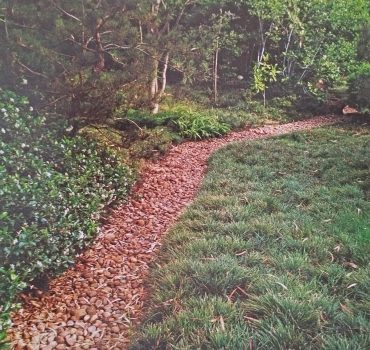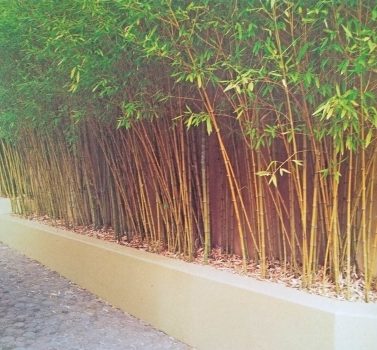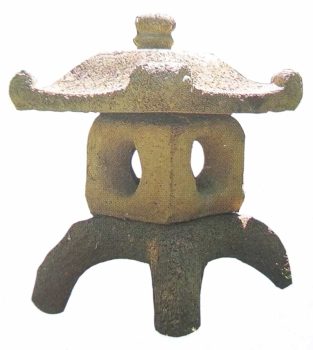Japanese Style Gardens
The Japanese have developed the art of gardening to the point of exquisite perfection with their delicate arrangements of water, rocks, stone and sand.
Several distinctively different Japanese garden types have evolved over the centuries, including the traditional Zen Buddhist garden with its raked gravel; the classical stroll garden that features lakes, bridges and natural scenery, and the tea garden, set in a secluded corner and surrounded by a bamboo fence or hedge for privacy.
Most residential stands in modern Japan are tiny, of course, but the classical gardens of three to five hundred years ago were created on huge Imperial properties. On the other hand, the temple gardens of the Zen Buddhist monks (who were devotees of the tea ceremony) were of a more modest size, while the tea garden itself was fairly small.
While the tea garden is probably the easiest style to emulate, much of what goes into a contemporary Japanese garden design derives from the meditative Zen Buddhist sand-and-stone arrangement (intended to be viewed rather than used). An essential aim here is to reproduce the idea of a natural landscape – a few large rocks around the base of a mound may suggest a mountain: a group of small trees a forest: an irregular, winding stepping stone path across open gravel the difficult route through life.
The overall design is asymmetrical: whilst overlaying the whole is an air of serenity and simplicity. even frugality.
Space is a prime element: perspective is subtly contrived: a large tree planted near the house and smaller ones on the boundary will give the illusion that the latter are farther away, thus visually enlarging the garden. A partially obscured view will reinforce the effect and confer a touch of mystery.
The Japanese value the tranquillity of water and often incorporate ponds (and, on the larger properties, even a small lake) close to the house. The still surface reflects the images of trees, shrubs and, at night, the moon. Water also introduces movement and sound – with the trickle of a cascade or a gentle swish as koi break the surface of the pool.
Layout
An authentic Japanese-style garden will be an uncluttered place of clipped shrubs (often in traditional rounded shapes), stepping stones over water, stone lanterns, raked sand or gravel and an imaginative use of rocks and stones. Larger properties are often divided into a series of smaller gardens. Here, bamboo screens, open trelliswork and shrubs all have an important role to play. If you have the space. consider creating a traditional tea garden in place of an entertainment patio.
Color
Subtle color is a vital element in the Japanese styled garden. Light-toned neutrals are integral to both the inside and outside of the house. Avoid bold. garish hues. Aim for a delicate mélange of green shades combined with natural earthy colors, the browns, greys and terracotta.
Flowers do have their place, but they are more usually grouped near the house itself rather than used as part of the general landscape or to add color to the overall scheme.
Surfaces and Materials
Low-maintenance surfaces are a feature. White sand or gravel, either representing a dry riverbed or the sea, is usually raked with patterns in the Zen Buddhist style. Round stones and water-worn pebbles are placed around ponds or positioned as part of the imaginary riverbed. They should not be set in mortar or the natural effect will be lost. Rocks are usually grouped to evoke the idea of a rugged mountain or simply to symbolize the supreme qualities of strength and stability.

Stone or granite paths (including stepping stones) are a must. In the absence of the real thing. use simulated stone flagstones (made from concrete). The material may also be used for patios.
Moss is another typical feature. Encourage any type of moss (or ferns or a low-growing ground cover) to grow around rocks and stones and under trees. If your area is too hot for moss, consider the many other ground covers before opting for a lawn – the Japanese seldom plant that type of grass.
Common materials used in the garden are timber (for decking) and bamboo (for fencing). Screens are prominent in the garden as well as within a house decorated in the genre. Use wooden and bamboo screens as partitions and backdrops.
Plants
‘Architectural’ plants are important: evergreen shrubs and trees provide the skeleton of the design. Avoid shrubs with large leaves; choose fine-leafed plants and trees with asymmetrical shapes.
In most gardens in Japan, trees and shrubs are severely pruned to bring them into proportion with the space available. (On the larger property it is usually only the rugged black pine trees that are pruned)
There are many suitable arboreal species, but fruit trees that blossom in spring are irresistible. Consider japonica (Chaenomeles japonica) with its bright yellow apple-blossom flowers, or a flowering quince (Chaenomeles speciosa), which bears beautiful rosy-red flowers in spring.
For windbreaks, plant the hardy conifer, Cryptomeria japonica (Japanese cedar): and if you have a cool woodland setting, plant one or two Japanese maples (Acer palmatum), which are much admired in their motherland for the fiery hues of their autumn leaves.

No Japanese-style garden would be complete without bamboo. There are numerous species but. in general, it is the smaller ornamental varieties which are best suited to the average garden. The dwarf species, Arundinaria auricoma, has a lovely. stripy green-and-gold foliage, while sacred bamboo (Nandina domestica) has graceful, fern-like leaves.
Although Zen Buddhist gardens have no flowers, blooms and blossoms play an important role in Japanese festivities and traditions. Evergreen camellias (C. japonica) and azaleas (Rhododendrons), both of which are indigenous to Japan, will provide glorious color in spring and early summer, and a timeless quality throughout the rest of the year. Several perennials and bulbs are grown to perfection in Japan, including the Japanese anemone (A. japonica) with its rosy-purple, pink or white blooms. A few flowers are acceptable, including the chrysanthemum, the national flower of Japan.
While bonsai is not part of the garden itself, you can add to the Japanese feel by grouping a few
favourite dwarf trees in sheltered corners of the patio.
Lighting

Perhaps the most valued source of light in a Japanese-style garden is the moon. An authentic
garden features trees with branches arranged (usually with the aid of wooden poles set in the
ground) to allow moonlight to shine through.
Stone lanterns (concrete imitations are widely available, metal and wood are suitable alternative materials) are essential accessories. In use since the 17th century, they are often partially concealed by foliage and may serve to light entrances and pathways or to draw attention to particular features.
Lanterns were traditionally lit by placing a bowl of oil with a floating wick inside, though nowadays candles are more often used. Lantern styles differ, but most are modelled on those found in old temples.
Features and Finishing Touches
Ornamentation is kept to a minimum. Lanterns are traditional, rocks and stones, as mentioned, serve as symbolic features; and water basins, set in beds of gravel or pebbles, can enhance the look.







